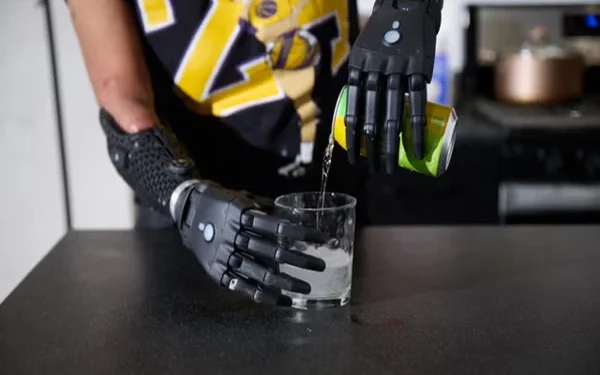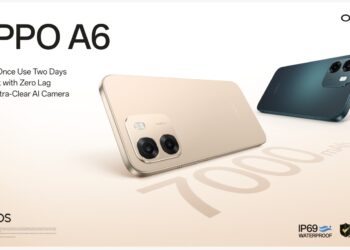A Leap Forward in Assistive Technology
In a groundbreaking development that could redefine the future of prosthetics, a British startup, Open Bionics, has unveiled what it claims to be the world’s most advanced bionic arm. Dubbed the “Hero Arm,” this revolutionary prosthetic is the first of its kind to be completely wireless, waterproof, and capable of functioning independently of its wearer. Designed and manufactured in Bristol, the Hero Arm sets a new standard for bionic limbs, boasting impressive capabilities such as enhanced strength, speed, and comfort.
The Hero Arm: Merging Robotics and Human Need
The Hero Arm stands out in the world of prosthetic technology for its seamless fusion of robotics and user-centered design. Open Bionics co-founder and CEO Samantha Payne announced that the new version of the Hero Arm is “twice as fast, stronger, and lighter than existing bionic arms,” offering superior performance while enhancing ease of use.
What makes the Hero Arm particularly revolutionary is its wireless design. Unlike previous models that require external battery packs or cumbersome wiring, the Hero Arm functions autonomously. This autonomy allows for a greater range of motion and eliminates many of the limitations users face with traditional prosthetic arms.
Additionally, it is the first advanced prosthetic limb to be entirely waterproof—an enormous benefit for daily wearers, especially those who engage in outdoor or water-based activities.
Cutting-Edge Features of the Hero Arm
The Hero Arm has undergone several technological advancements to earn its title as the most advanced bionic limb on the market. Some of its key features include:
- Wireless Functionality: No external cables or power supplies are required.
- Waterproof Build: Users can now shower, swim, or work in wet environments without damaging the prosthetic.
- 3D-Printed Customization: Each arm is designed specifically for the user using 3D scanning and printing, ensuring a perfect fit.
- Multi-Grip Capabilities: The arm can switch between multiple grip types for various tasks—such as holding utensils, writing, or opening doors.
- Myoelectric Sensors: These detect electrical signals from the user’s muscles to control the prosthetic with intuitive precision.
- Lightweight Design: Easier for users of all ages, especially children and teenagers, to wear comfortably for extended periods.
Transforming Lives: From Sci-Fi to Reality
Since its inception in 2014, Open Bionics has been dedicated to turning science fiction into science fact. The startup initially gained attention for its vision of creating affordable, high-quality bionic limbs using 3D printing technologies. With support from tech giants like NVIDIA and major healthcare organizations, Open Bionics has delivered over 1,000 customized prosthetic arms to people in need.
What sets Open Bionics apart from traditional prosthetic manufacturers is its ability to produce functional, aesthetically pleasing arms at a fraction of the cost. Traditional high-functioning bionic limbs can cost upwards of $100,000, making them inaccessible for many people with limb differences. Open Bionics’ Hero Arm is available for under £10,000 (approximately $12,500), a price that has made this technology more accessible than ever.
Moreover, the company allows for customization in style and design—many Hero Arms are modeled after superhero themes, allowing users, especially children, to feel empowered and excited about wearing their prosthetic.
Global Recognition and Support
Open Bionics has received international acclaim for its innovations. The Hero Arm has been featured at numerous technology expos and has earned awards for both innovation and impact. The company has also partnered with the UK’s National Health Service (NHS), enabling patients across the UK to access the Hero Arm through public healthcare.
Furthermore, Open Bionics collaborates with charities and nonprofit organizations to provide arms to those who cannot afford them. Their commitment to social good has made them a leader not only in the tech world but also in inclusive healthcare innovation.
Changing the Narrative Around Disability
One of the core missions of Open Bionics is to change how people perceive disability. The Hero Arm is more than just a medical device; it’s a symbol of empowerment. By incorporating sleek designs and advanced functionality, Open Bionics ensures that users don’t feel the need to hide their prosthetics—instead, they showcase them with pride.
Many Hero Arm users become ambassadors, sharing their experiences online and helping to raise awareness about the possibilities of modern prosthetics. These stories are often shared across social media platforms, contributing to a global conversation about accessibility, inclusion, and technological innovation.
The Future of Bionic Prosthetics
The launch of this latest Hero Arm model represents just the beginning for Open Bionics. The company is already working on expanding its technology to include more modular attachments, enhanced sensory feedback (so users can feel touch), and even integration with augmented reality for rehabilitation purposes.
As AI and machine learning continue to advance, future iterations of the Hero Arm could include predictive motion capabilities, real-time diagnostics, and seamless brain-computer interfaces.
Conclusion: A New Era for Human Augmentation
The unveiling of the world’s most advanced bionic arm is not only a technological milestone but also a symbol of hope and progress for individuals with limb differences around the world. With its wireless and waterproof capabilities, powerful grip, and sleek design, the Hero Arm is setting a new standard for prosthetic limbs.
Thanks to the tireless work of startups like Open Bionics, the future of prosthetics is not just functional—it’s empowering, inclusive, and full of potential. The Hero Arm is not just a piece of medical equipment; it’s a movement toward a more inclusive and technologically advanced world.

























